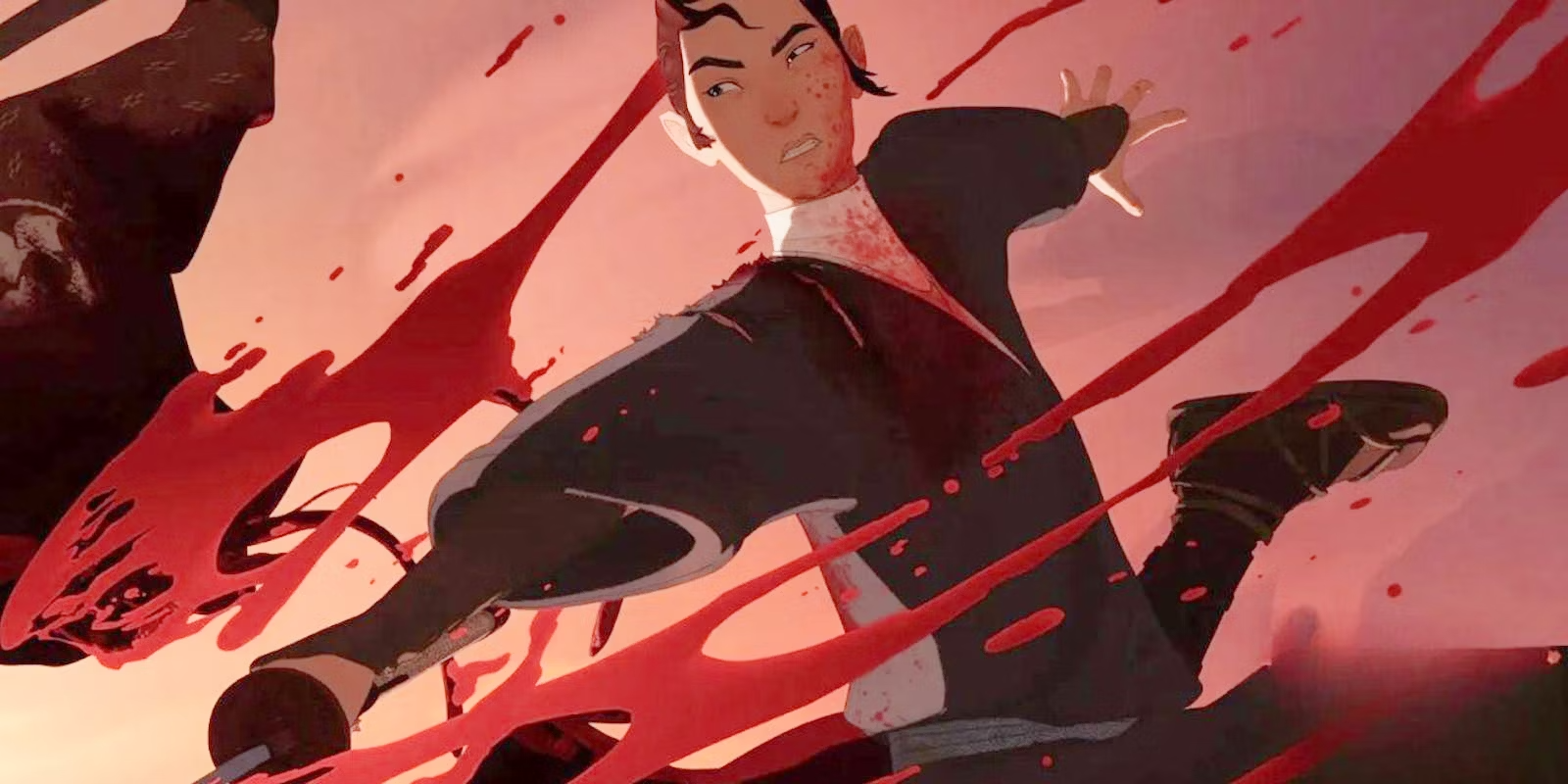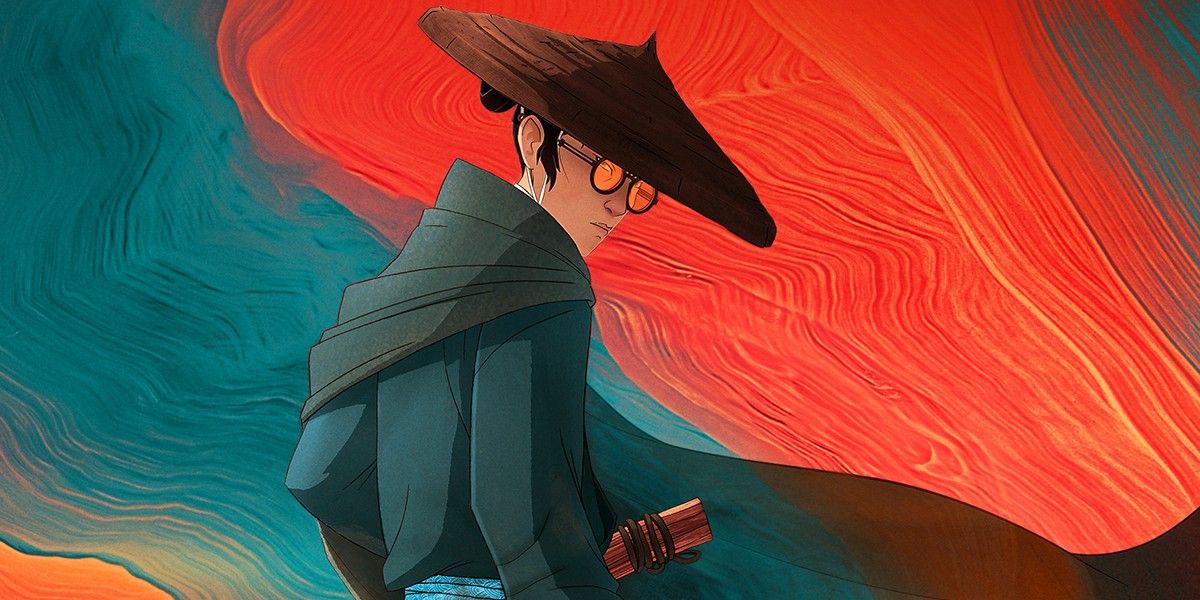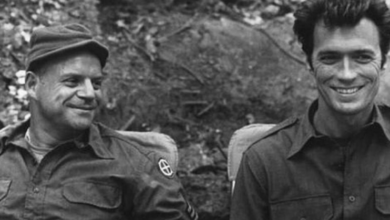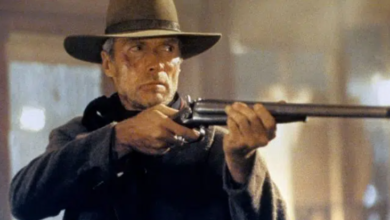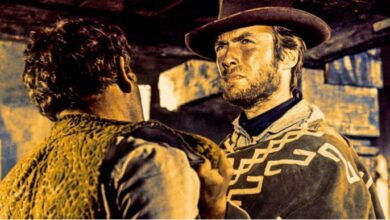Blue Eye Samurai Interview: Creators On Clint Eastwood Inspiration & Live Action Feel In Animation
Blue Eye Samurai creators Michael Green and Amber Noizumi discuss the impressive cast, the importance of representation, and their inspirations.
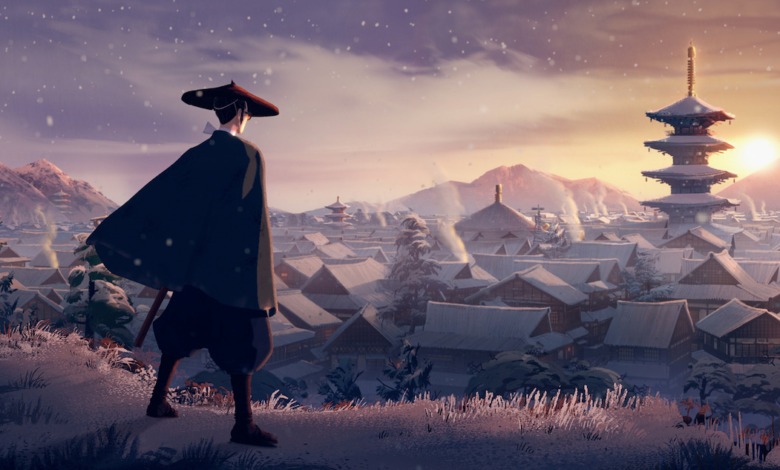
SUMMARY
- Blue Eye Samurai is set in 17th-century Japan and follows a mixed-race protagonist seeking revenge for her discrimination.
- The series features a star-studded voice cast, including Maya Erskine, George Takei, and Kenneth Branagh.
- The creators aimed for a unique animation style that blends traditional brushstrokes with 2D and 3D animation to create a visually stunning experience.
Blue Eye Samurai is set in 17th-century Japan, which is when the country’s borders were closed to the rest of the world. Mizu is mixed-race and sets out to find the four white men who were in Japan when she was born, one of whom must be her father, wanting revenge for having faced discrimination her entire life. As she begins her quest to find and kill these men, she must hide her gender and blue eyes. Joined by an odd group of characters, Mizu will travel across Japan with her singular bloody goal in mind.
Blue Eye Samurai was created by Michael Green and Amber Noizumi. The Netflix animated series stars a powerhouse voice cast including Maya Erskine, George Takei, Masi Oka, Cary-Hiroyuki Tagawa, Brenda Song, Darren Barnet, Randall Park, and Kenneth Branagh. Blue Eye Samurai consists of eight episodes, all of which are available to stream now.
Screen Rant interviewed Michael Green and Amber Noizumi about their new adult animated series, Blue Eye Samurai. Noizumi revealed how their daughter inspired the name of the series and discussed the impressive cast. Green explained the unique visual style and cinematic influences. They also teased that they have plans for multiple seasons.
Michael Green & Amber Noizumi Talk Blue Eye Samurai
Screen Rant: Amber, Michael, Blue Eye Samurai is a masterpiece. I love this show. The animation’s gorgeous. The characters have so much depth. It got to a point where I almost forgot I was watching an animation at all. For anybody that likes Kill Bill, Warrior, Game of Thrones, this is right up your alley. Amber, how did this show come about?
Amber Noizumi: It only took 15 years.
Just 15 years.
Amber Noizumi: The short answer is we had a baby. Much to my surprise, she had blue eyes. We started calling her our little blue-eyed samurai, and we’re like, “Wait, that’s a great idea.” But a lot of it came from just my mixed race background, just feeling stuck between two worlds, and deciding, “What if we put those feelings into a world in Japan, where the borders were closed, where it was so homogenous, and that era is still heralded as the golden age of Japan? The golden age, where nobody was allowed in who looked different, and what that must have felt like. Just, let’s make a good story out of that.”
Absolutely. I totally identified with the character Mizu. I am also of mixed race, half Asian origin, so this completely hit home for me. Michael, I’ve never seen anything like this show, ever. Can you describe Blue Eye Samurai visually?
Michael Green: When you said, in your introduction to it, that you forgot you’re watching animation, that was our goal. Yes, we wanted to make sure that our artists felt completely off leash, to make the most beautiful possible version they could, that everything about this was going to be really bespoke. But what we said is if we do all that right, and we make these characters, both on the page, but in their design, feel real and feel different, that people might have the experience of just forgetting that they were watching, and have a high degree of attachment, as if they were watching movie stars playing these roles, not just movie stars voicing these roles.
That was really it. Everything about it was a live action aesthetic. We come out of live action. Our supervising director, Jane Wu, has an animation background, but has been working as a storyboard artist in live action, the highest levels of live action, in Marvel, and Game of Thrones, on, and on, and on. We wanted to take as much of the lessons of our background, and apply it to animation, and hopefully to come up with something that really… Every show says they want to do something different, we might’ve accidentally done that.
Yeah. I absolutely agree. As soon as I started watching the show, I was completely in, and I could not turn it off. Amber, Maya Erskine, George Takei, Masi Oka, Ming-Na Wen, Brenda Song, Randall Park, Kenneth Branagh, Stephanie Hsu, Mark Dacascos, Harry Shum Jr., and the list goes on and on. Can you talk about bringing this fantastic cast together for Blue Eye Samurai, and the importance of representation in the casting?
Amber Noizumi: Definitely. I would like to say that it was so hard to bring these people together, that we worked night and day, wooing them and sending them flowers, doing promposals at their front door, but really, they were all so excited. They all just said yes. It took nothing, and I think it was because of the Asian representation. We made it clear to them. Our casting directors, Margery Simkin and Orly Sitowitz, they went to these people, and asked them, and they just said yes. Because people wanted to get involved with something that was telling a story that was so about Asian culture, and just be a part of that. It hasn’t been done so many times. We are very fortunate to have the talents of all these amazing people.
Incredible. Michael, when this series starts off, it feels like a Clint Eastwood Western in the East. What were some of the cinematic inspirations you guys drew from, for Blue Samurai, while crafting the series?
Michael Green: So many, and thank you. Yes, we talked about Clint Eastwood, both in how we were going to introduce the character, the Man with no Name, Good, Bad and the Ugly. Once Upon a Time in the West was a major touchstone. But also when we spoke to Maya Erskine about building her performance, that Mizu is literally the man with no name in the first episode. She does not get called Mizu until later. We wanted the audience to have that experience of treating a mixed race woman as a Clint Eastwood type, strong, silent male character.
We had so many influences. The first time we met Jane Wu, our Supervising Director, and nerded out about, like, “Oh my God, you love Zatoichi?” We talked about Lone Wolf and Cub. This was an excuse to go deep, and buy the entire series and read through them. Obviously, Kurosawa movies, but then also Mizoguchi-
Amber Noizumi: Lady Snowblood.
Michael Green: Lady Snowblood, Onibaba, Kuroneko by Shindo, who, which we loved so much that we actually named the character Heiji Shindo, and Shindo Dojo. You can Easter egg our influences, shots borrowed from great films. If we end up getting compared to-
Amber Noizumi: Or songs borrowed-
Michael Green: … songs borrowed-
Amber Noizumi: … the Kill Bill reference.
Michael Green: If people say, “They stole from Harakiri,” we’ll be like, “Thank you.” Yes, please. Yes, accuse us of stealing from geniuses.
Amber, the animation style, oh, my goodness. I have never seen anything like this. It was these beautiful painted brushstrokes, but mixed together with this 2-3D animation. I want to say this is not an anime, this is an adult animation. Can you talk about the animation style, and collaborating with Blue Spirit studios, on the challenges of bringing Blue Eye Samurai to life?
Amber Noizumi: Well, definitely, we wanted the show to look like something nobody had ever seen before. We said, from the beginning, “This is not going to be anime.” We all love anime, but we need it to be different. We need to expand our audience. We need everyone to know that this is not just for anime lovers, this is for a whole new audience. We had to work to find that right balance, and that right style. We worked with our supervising director, Jane Wu, and with the talents of many, many other people, and the collaboration of Blue Spirit, to find the right balance within our guidelines that we were provided. I think it worked out.
Michael Green: Our Production Designer, Toby Wilson, came at it. We have to give him props.
Amber Noizumi: Yeah. Yeah.
Michael Green: Comes at it with so much passion. Everyone did. Our character designer, Brian Kesinger, one of our supervising animators, Mike Greenholt, these people would work with Blue Spirit day in, day out, to make sure the details were just right, that the emotions on the face were clear. Then, of course, the movements were right, that Japanese women were walking. If they were meant to be a proper Japanese woman, they walk a certain way, that feet go a certain… We had to get the in-toe just right.
Amber Noizumi: The kimono sleeves go a certain way.
Michael Green: Yes, the endless conversations that kimonos are not bathrobes, but have an internal structure and layering. It’s just everyone cared so much, and Blue Spirit was just game.
Yeah, there were almost times where I felt, I thought it was like rotoscope, because the way the camera moved, and everything floats so smoothly. I was blown away by the animation.
Michael Green: We used previs, but not rotoscope. We used camera lensing and previs, and a lot of the vocabulary of building live action film. But yeah, no, that’s a great compliment. Thank you.
Amber Noizumi: Thank you.
Yeah, it was incredible. Michael, I do want to ask about Jane Wu, because she is incredible. She was the supervising director on this, and producer for Blue Eyes Samurai. She worked as a story artist on projects. You had mentioned The Avengers, Guardians of the Galaxy, Mulan, and Game of Thrones. She’s also directed animation before. How did you guys get her back into animation, and can you talk about working with her to find the right tone for Blue Eyes Samurai?
Michael Green: Yeah. When Netflix read the script, and had bought it and read it, and they basically said, “We want to pick this up, but it takes a director for us to be able to say yes.” We said, “Great. We know directors in live action. We don’t know animation people. We need to figure out who to talk to together.” Then the head of animation we were working with, Mike Moon, said, “I’m going to introduce you to Jane Wu.” We said, true story, we said, “Great, but we like options. Who else should we meet?” And he said, “You’re going to meet Jane Wu, because, A, there’s no one else with that background, and B, you’re going to love her.”
And he was right. We were instantly like the three legs of a stool, is what we always said, although stool is probably the wrong word to describe art, but we were just instantly tonally aligned. We talk about our favorite references. We looked at pictures, of images that we could see being influential for concept art. Then it was also just joining hands with her, and saying, “We’re not going to take a dive, and go from concept art to something completely different. We’re going to make sure it continues to look like that.” She said, “Those brushstrokes we see, those stay,” and we’re like, “Yeah,” so now we’re family.
Incredible. Amber, I want to talk about one of the amazing characters we meet in this series, Maya Erskine plays Mizu. What makes Mizu so unique and relatable, and what made Maya the perfect choice to play Mizu?
Amber Noizumi: Everybody will relate to Mizu as somebody who’s felt marginalized, who’s felt just that need to seek revenge, or to seek wholeness for herself. Maya Erskine, in PEN15, we fell in love with her. I don’t know if you haven’t seen PEN15, you should. It’s comedy, but there’s such a sadness to the comedy, in Maya’s character, and that there’s the sadness of her just grappling with her mixed race identity. We knew that Maya could bring that to this character, and she did in spades and brought such depth to Mizu.
We want to root for Mizu’s quest for revenge, but we also want to root for Mizu finding some self-acceptance, to maybe not need to kill so many people because she’s so angry. Maybe she can have some friends. Maybe she can open herself up a little bit. That’s, ultimately, we needed to bring some more warmth and humanity to Mizu over time, that she’s not just a killing machine.
Speaking of that, Michael, can you talk about Mizu’s bond with Ringo, played by Masi Oka?
Michael Green: It’s funny, when you were just saying that, I was thinking like, “Oh, my God, we kind of made her a little Batman,” where it’s like, think of Batman. He’s so driven. “I experienced this trauma, and I will metastasize that into hyper violence,” but one of the most charming things you can do to Batman is give him accidental partners. Eventually, Batman is at his best when he is tempered with Robin, who I think we might’ve called Ringo, but obviously very different characters.
Amber Noizumi: Hey, wait a second…
Michael Green: Wait a second. The analogy breaks down pretty quickly. The honest truth is we’ve never actually discussed that. That was just… We knew that the fun of a character who is so driven, the most fun you can have is poke them, because they just don’t have, like, “Argh, stop trying to make me enjoy things.” And along comes someone who is marginalized in his own way, who is looked down as other. He’s disabled, he’s born without hands, but he is in an irrepressibly, sunny way, that I think Masi Oka very much is in his life, wouldn’t let that take him down.
“I’m born without hands? I’ll make some tools. I’m still a great chef. I can still make things work,” but he knows how people look at him. So when he sees Mizu, thinking Mizu is a man who is badass, but is also looked down as very much other, if not disabled, in their community, he sees a hero, instantly. “Oh, my God. You are everything I want to be. Teach me to be like you,” and then Mizu can go, “No, please keep 10 foot distance. I have no time or patience for you.” For that character to worm his way into her life, by her side, it was just joy. It was joy to write those scenes, came easy, and made us laugh.
Now last question I do have for you guys is I know that animation takes a long time, so please tell me you’re already working on season two. But all honestly, how far long have you plotted ahead, and how many seasons would you like to tell this story in?
Amber Noizumi: We have a lot of stories in our hearts, that we’re just waiting to make. We are not working on a season two. We’re waiting for season one to premiere, and see how successful it’s going to be. We need everybody to watch it, starting November 3rd, and then there will be a season two.
Michael Green: Yes, which we have.
Amber Noizumi: Yeah.
Michael Green: It is plotted out. Season two has an approved outline. In our heart of hearts, we want to tell at least three, four seasons. We know the end of this story. We would love to continue. We know the spinoff-
Amber Noizumi: A spinoff series, where Ringo-
Michael Green: We know exactly where this goes in the future. We are just hoping that the audience for original content shows up and necessitates further storytelling.
About Blue Eye Samurai
Set in isolationist Edo-period Japan (1603-1868), “Blue Eye Samurai” follows Mizu (Maya Erskine), a mixed-race samurai who’s been discriminated against all her life for her biracial identity. As a result, Mizu wears tinted glasses to cover up her blue eyes and therefore keep her whiteness a secret.
Blue Eye Samurai is available now on Netflix.

